17 Retro Shoe Styles From The 1950s That Will Take You Back In Time
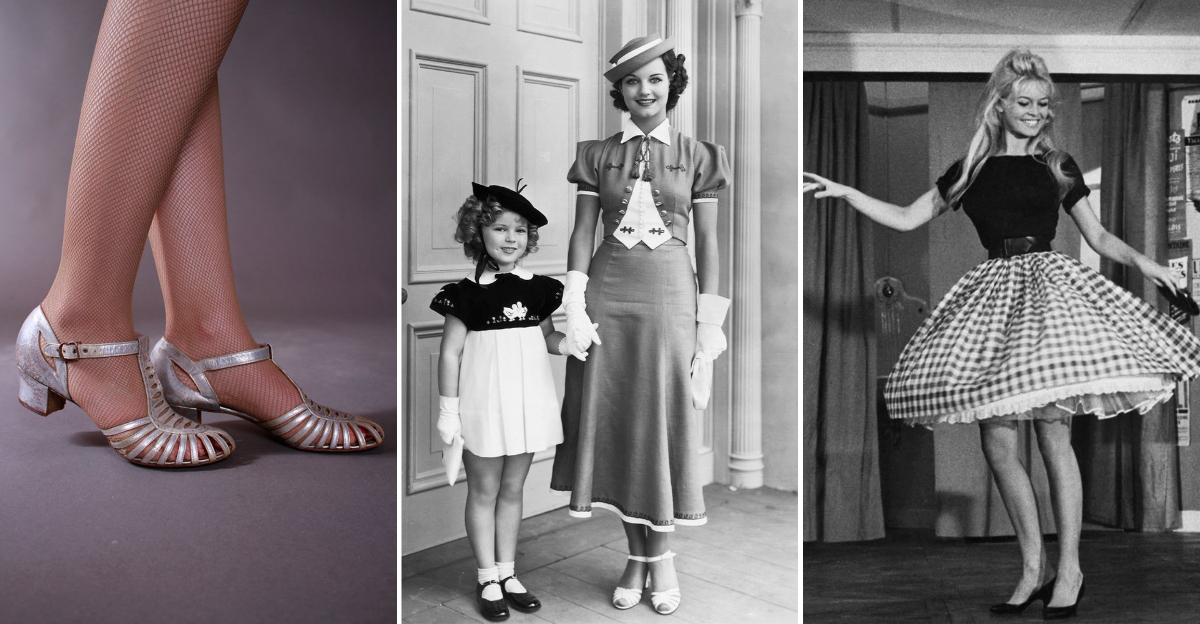
The 1950s marked a golden era for footwear fashion, bringing us iconic styles that still influence designers today.
After World War II restrictions eased, shoe designers went wild with creativity, introducing bold shapes, playful details, and innovative materials.
I’ve always been fascinated by how these vintage kicks tell stories about post-war optimism and the birth of American teen culture – each pair capturing a moment when tradition met rebellion.
1. Saddle Shoes: The Two-Toned Teen Sensation
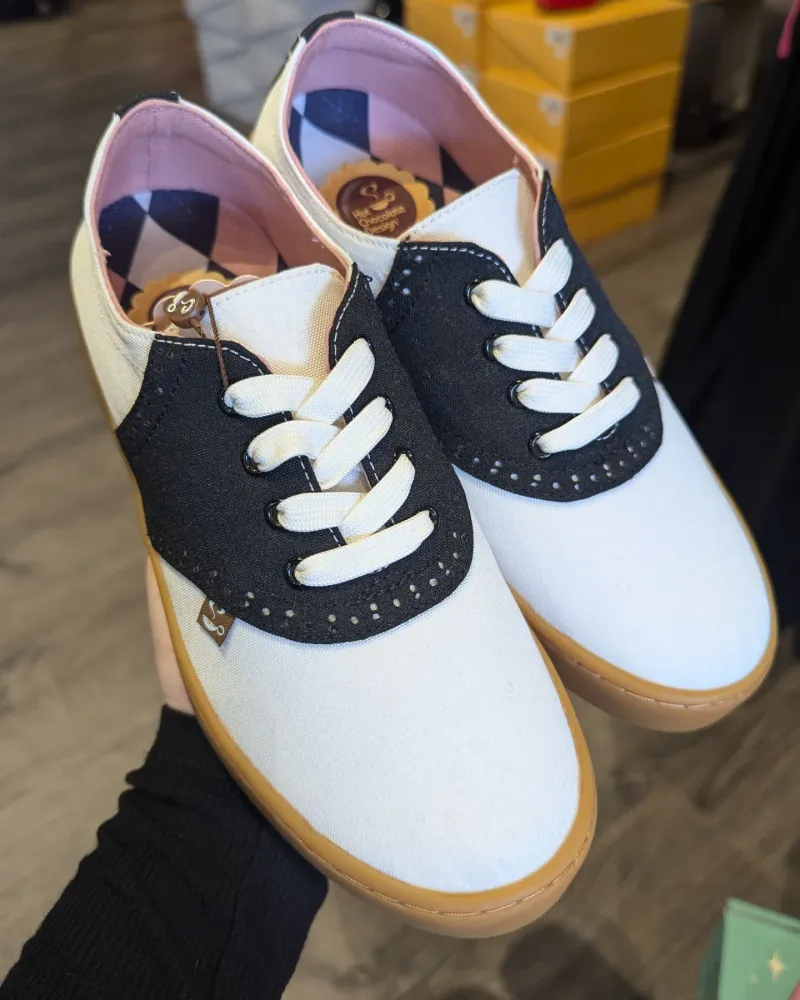
Nothing screams ’50s high school hallway like the classic black and white saddle shoe. I remember my grandmother keeping her perfectly polished pair in a special box, telling stories about how strict the dress code was about keeping them pristine. These iconic oxfords featured a contrasting leather “saddle” across the middle that gave them their distinctive name.
Originally designed as athletic shoes in the 1900s, they exploded in popularity when bobby-soxers paired them with poodle skirts and crisp blouses. Boys wore them too, though typically in darker color combinations. The rubber soles made them practical for everything from sock hops to soda fountains.
What made saddle shoes truly special was their staying power – they bridged the gap between proper footwear and casual cool, making them acceptable to parents while still feeling rebellious to teens.
2. Kitten Heels: Sophisticated Training Wheels
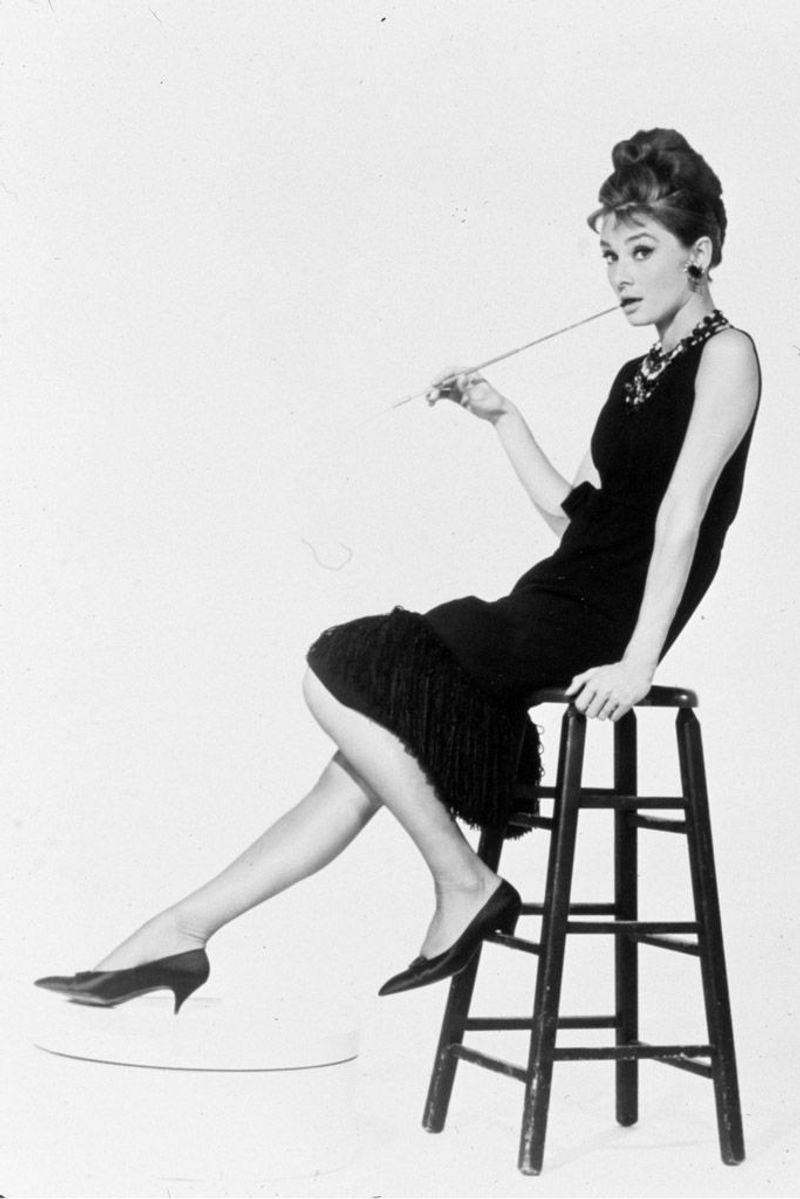
My aunt once told me kitten heels were her first “grown-up shoes” – the perfect compromise her mother allowed before graduating to adult stilettos. Standing just 1-2 inches tall with a slightly curved shape, these dainty heels represented the middle ground between flats and towering pumps.
Audrey Hepburn helped popularize them, showing women everywhere that elegance didn’t require wobbling on skyscraper heels. The genius of kitten heels was their versatility – office-appropriate yet suitable for dinner dates or Sunday church services.
Most featured pointed toes and simple designs, though fancier versions came adorned with small bows or buckles. I love how they embodied the era’s contradictions: modest yet fashionable, practical yet feminine. For many young ladies, receiving their first pair marked an important rite of passage.
3. Mary Janes: The Strap That Defined a Generation
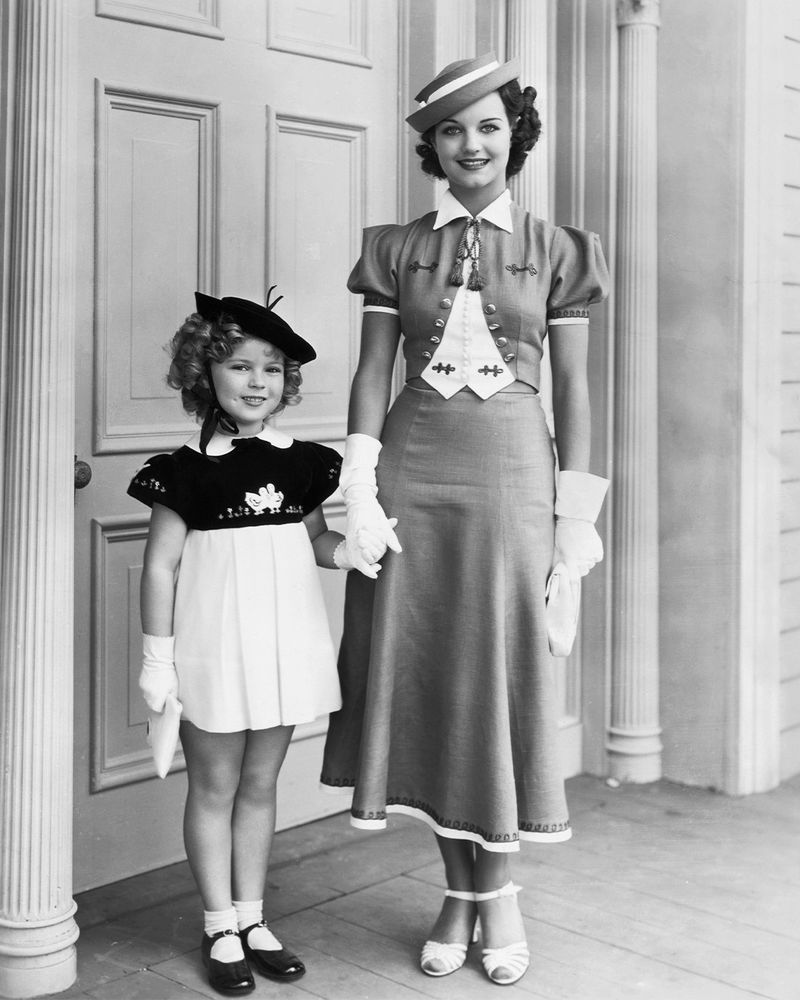
Those single-strapped wonders conquered every playground and party in the ’50s. Mary Janes weren’t just shoes – they were childhood essentials that grew up alongside their wearers. The basic design featured a rounded toe, flat or slight heel, and that signature strap across the instep fastened with a button or buckle.
Parents loved their practicality while kids appreciated how they stayed put during playground adventures. For special occasions, patent leather versions in black or red reigned supreme. The style adapted beautifully for women too, with slightly higher heels and more sophisticated materials.
My mother saved her childhood pair in a trunk – scuffed toes telling stories of hopscotch games and Sunday school recitals. What made Mary Janes truly special was their ability to transition from childhood to adulthood without losing their charm or identity.
4. Peep-Toe Pumps: Flirtatious Footwear
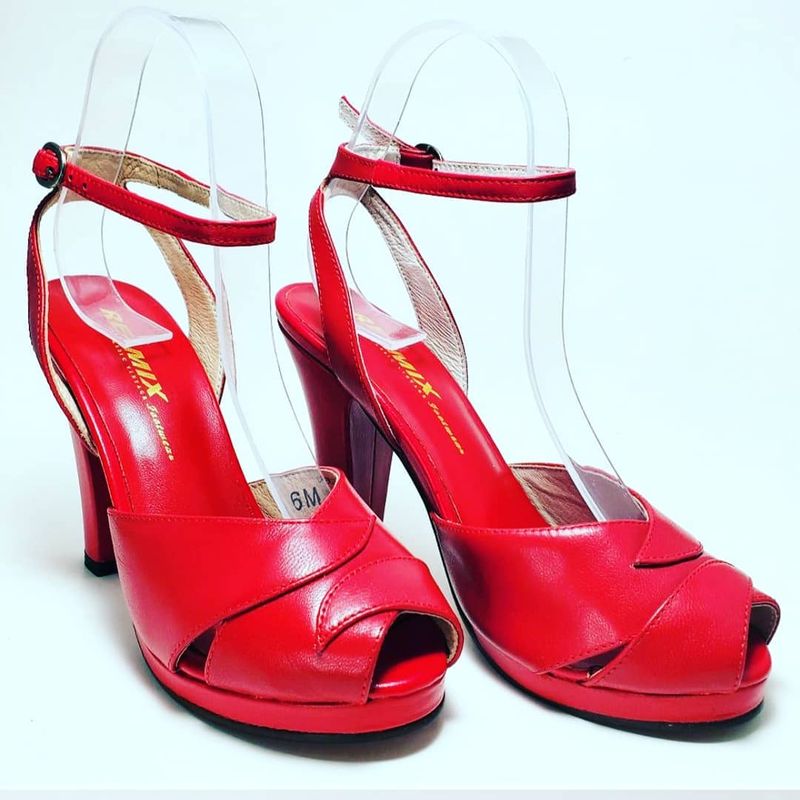
Peep-toe pumps brought a dash of playful allure to ’50s fashion with their small opening that revealed just a hint of painted toenails. I found a pair in my grandmother’s closet once – red leather with a perfect cutout that somehow managed to be both proper and flirtatious at once.
These shoes typically featured medium heels (around 2-3 inches) and often incorporated platform soles for additional height and comfort. Women paired them with everything from pencil skirts to full-skirted dresses, making them versatile workhorses in any wardrobe.
Summer versions came in colorful fabrics and straw, while winter styles stuck to leather and suede. The genius of the peep-toe was how it solved the eternal summer shoe dilemma – too hot for closed pumps but too formal for sandals – creating the perfect year-round compromise.
5. T-Strap Heels: Dancers’ Darlings
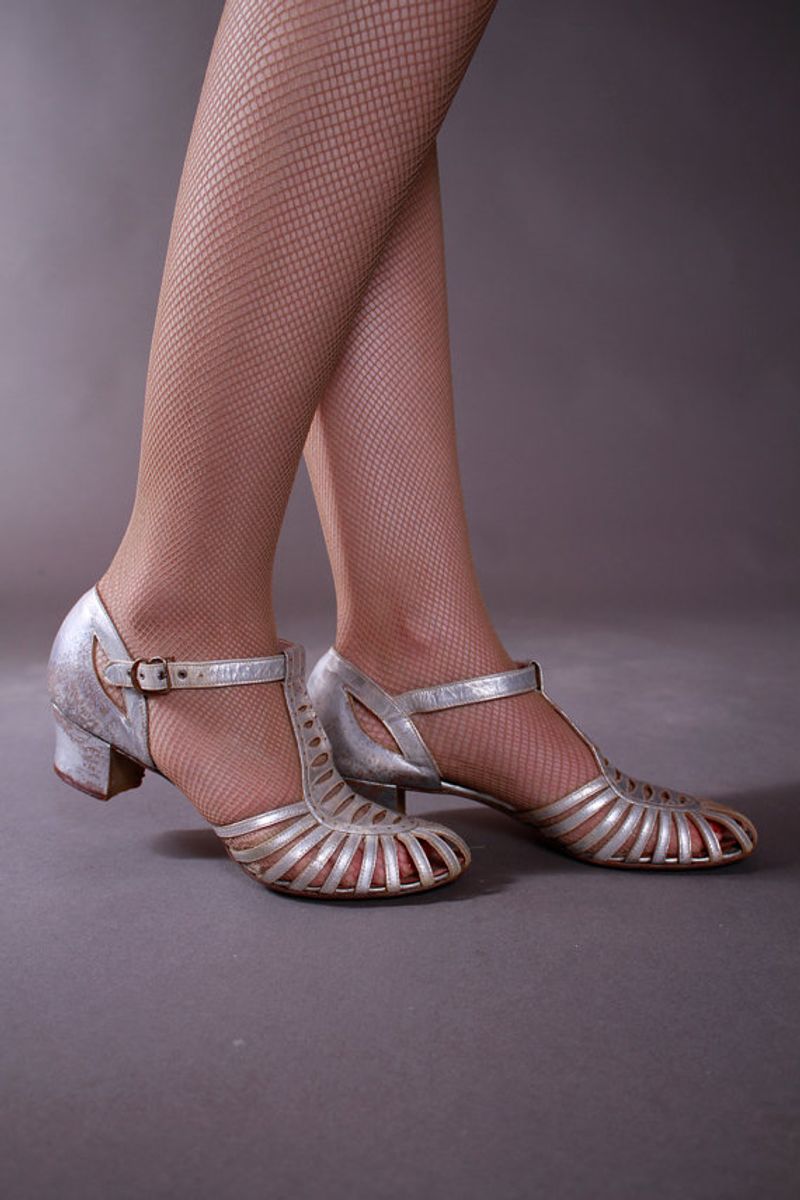
When the music started and couples hit the dance floor, T-strap heels kept feet secure through every swing and twirl. Named for their distinctive T-shaped strap configuration, these shoes combined the security of Mary Janes with grown-up sophistication.
Dancing was serious business in the ’50s, and these shoes answered the call with their perfect balance of style and function. The vertical strap running from toe to ankle connected with a horizontal strap, creating that distinctive T that gave dancers confidence their shoes wouldn’t fly off mid-jitterbug.
Available in countless variations – from modest office-appropriate versions to glittering evening styles – they appealed to women across age groups. My dance instructor still swears they’re the best shoes ever designed for ballroom, claiming modern dancers don’t know what they’re missing with their boring strappy sandals.
6. Ballet Flats: Bardot’s Barefoot Revolution
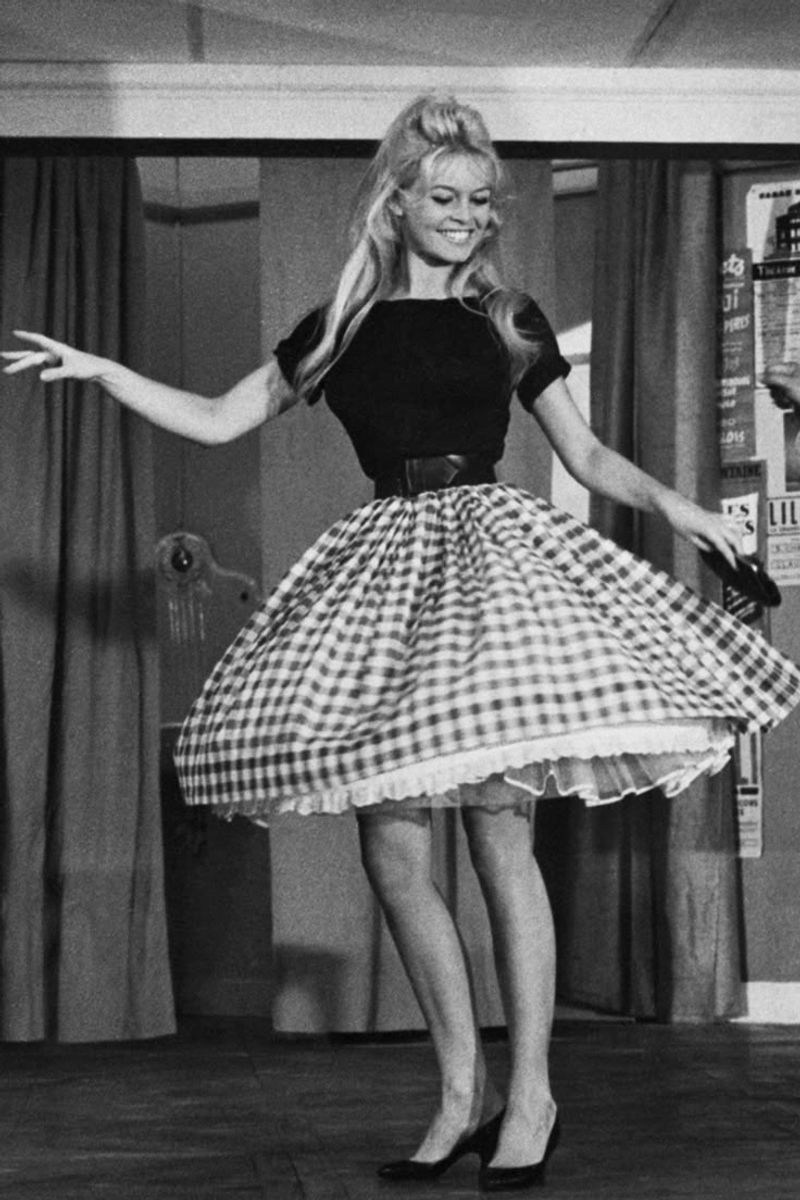
Ballet flats brought dance-inspired comfort to everyday fashion, thanks largely to style icon Brigitte Bardot. The story goes that Bardot, a former ballet dancer, requested a street-worthy version of her dance slippers from a French shoemaker – and a fashion revolution began.
Unlike today’s structured versions, ’50s ballet flats were genuinely soft and foldable, often coming with a small drawstring bag so women could tuck them into purses as emergency relief from heels. The rounded toe and completely flat sole made them radical departures from the decade’s typically structured footwear.
Colors ranged from practical black and navy to eye-catching red and even metallics for evening wear. My grandmother called them her “freedom shoes” – the first style that prioritized comfort without sacrificing femininity. They represented a quiet rebellion against the era’s sometimes restrictive beauty standards.
7. Wedge Sandals: Cork-Soled Comfort Queens
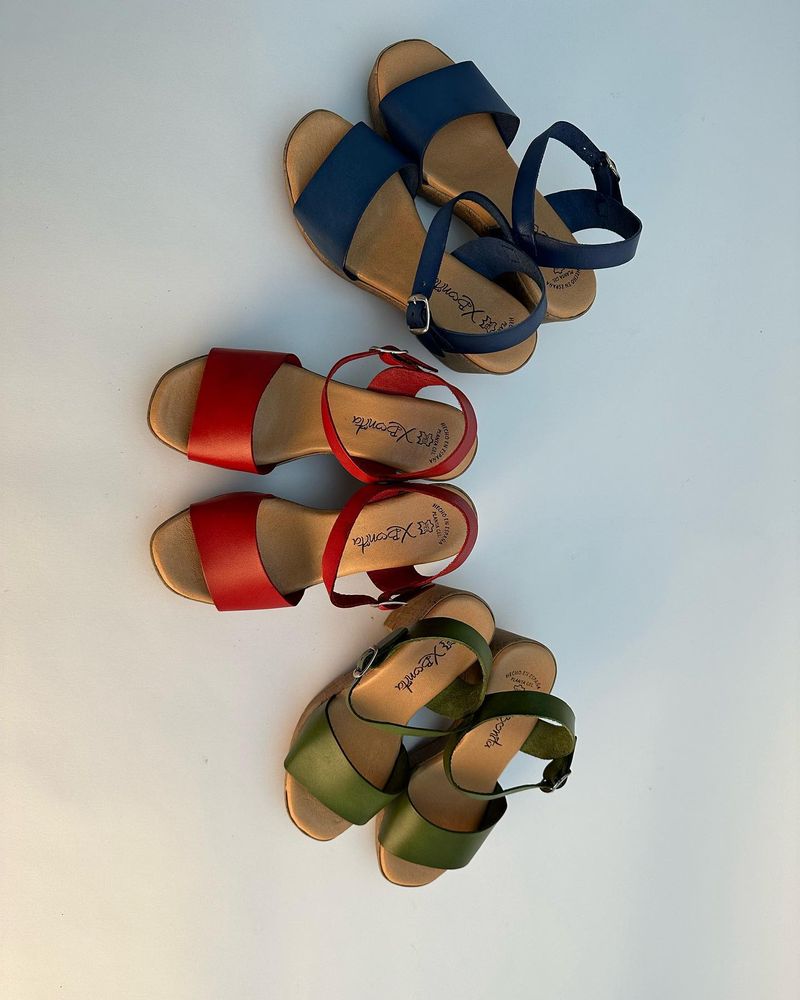
Wedge sandals offered ’50s women something revolutionary – height without the wobble of stilettos. I found my grandmother’s favorite pair while cleaning out her summer house – white leather straps atop a cork platform that had darkened with age and countless summer adventures.
These practical yet stylish shoes solved multiple problems at once. The solid wedge provided stability on uneven surfaces like boardwalks and garden parties. Their open design kept feet cool during sweltering summers before widespread air conditioning.
Materials ranged from everyday canvas and leather to more exotic raffia and woven straw for tropical-inspired styles. The most distinctive feature was that cork sole – lightweight, comfortable, and surprisingly durable. They represented the era’s growing focus on practical leisure wear as Americans embraced outdoor living and casual entertaining.
8. Block-Heel Pumps: Office-Ready Workhorses
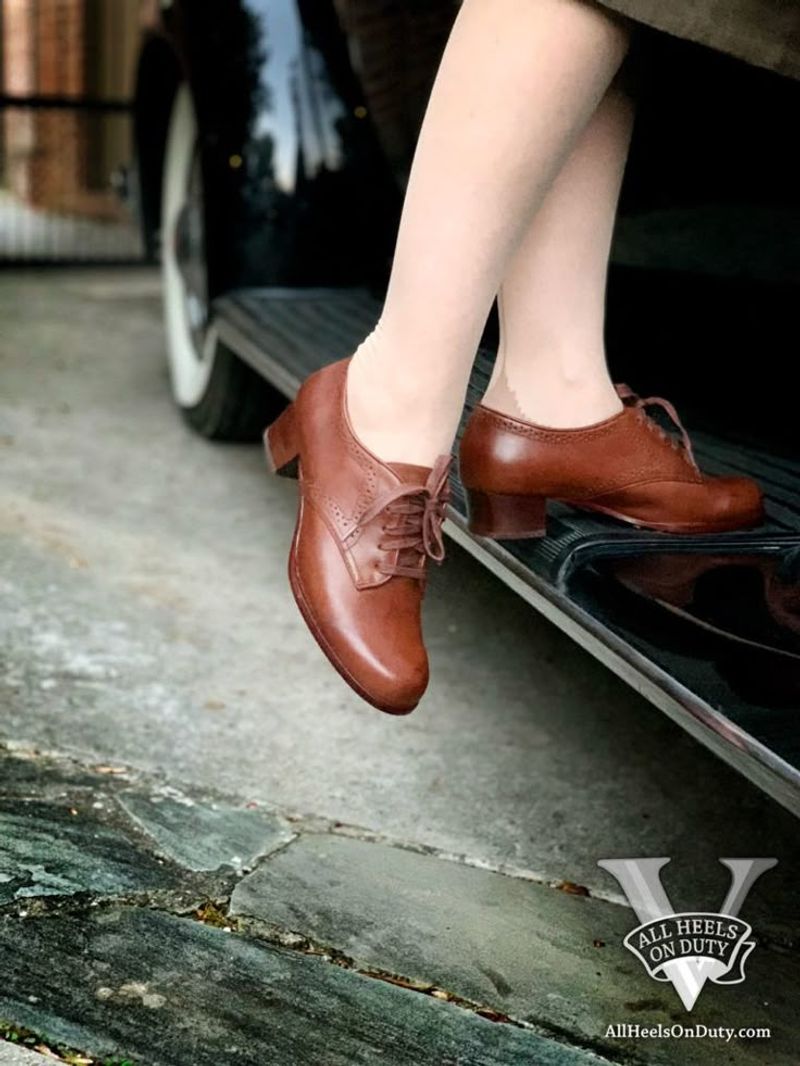
For women entering the workforce in record numbers, block-heel pumps offered professional polish without punishing feet. My mother started her secretarial career in navy blue ones she polished every Sunday night alongside Dad’s work shoes – a ritual of workforce preparation.
The defining feature was that squared-off, substantial heel measuring between 1-2 inches – high enough for formality but low enough for all-day comfort. These practical pumps typically featured closed toes, minimal ornamentation, and sturdy construction designed to withstand daily commutes and long hours at desks.
Color options remained conservative – black, navy, brown and occasionally burgundy dominated. What made them revolutionary wasn’t flashy design but rather their acknowledgment that working women needed shoes that functioned as tools for success rather than just fashion statements. They represented the quiet determination of women building careers in a transitioning economy.
9. Penny Loafers: Collegiate Cool for Everyone
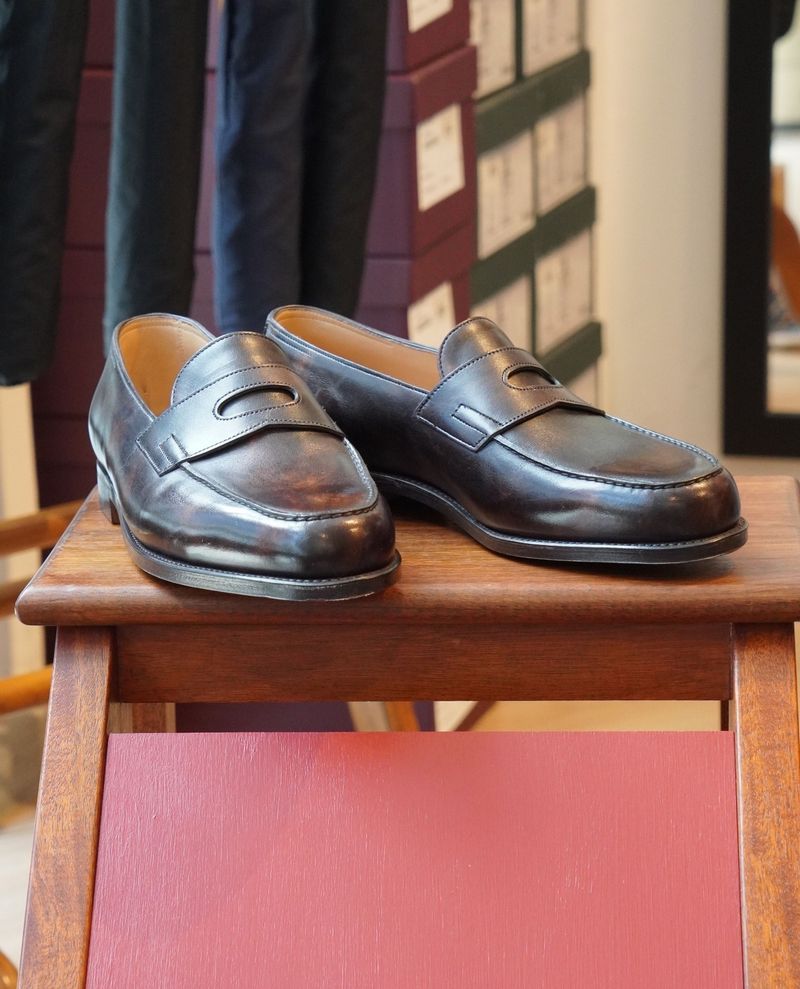
Penny loafers broke all the rules by jumping from men’s closets to women’s, becoming the first truly unisex footwear phenomenon. The story behind the name still makes me smile – students would tuck a penny into the diamond-shaped slot on the leather strap across the vamp, supposedly for emergency phone calls.
Originally designed for men, these slip-on leather shoes featured a moccasin-like construction with a separate piece of leather across the top. Manufacturers quickly recognized their appeal to college women seeking comfortable alternatives to formal footwear for campus life.
Brown was the standard color, though black and cordovan gained popularity too. What made penny loafers revolutionary wasn’t just their comfort but how they symbolized the relaxing of gender boundaries in fashion. They represented the growing youth culture’s influence on mainstream style – comfort and practicality winning over rigid formality.
10. Open-Toe Mules: Boudoir Steps Out
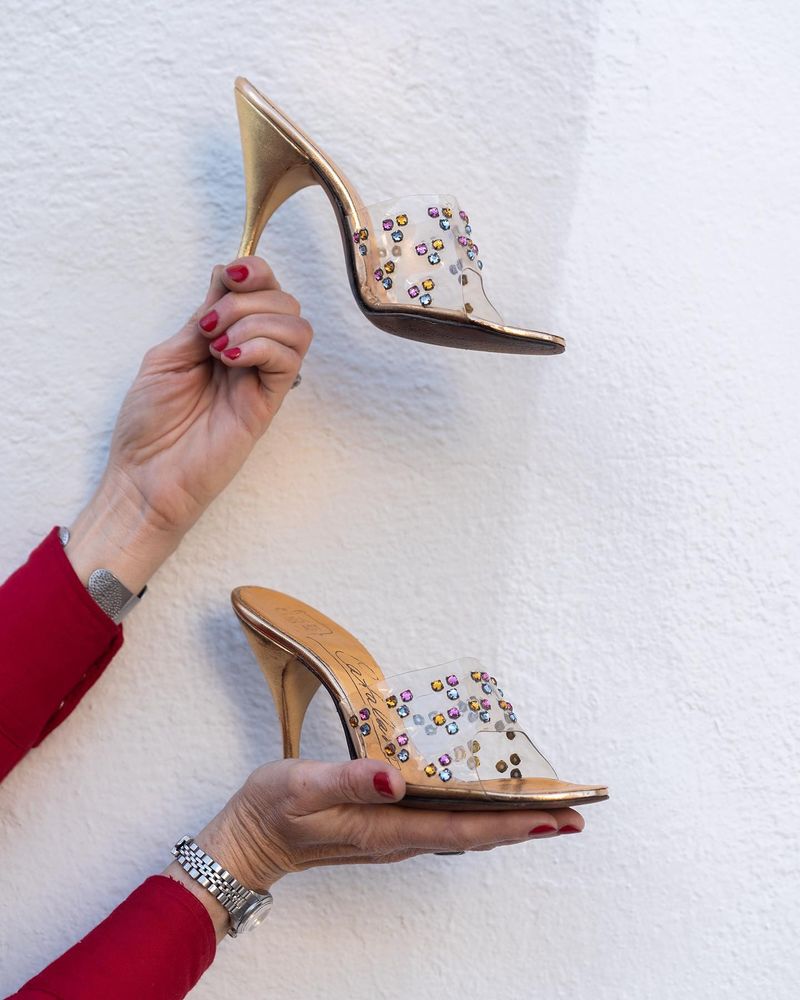
Open-toe mules brought bedroom glamour into the living room, transforming what was once considered intimate footwear into acceptable daywear. These backless slip-ons featured a closed toe box with an opening for toes, usually perched atop a slim heel.
Hollywood starlets popularized them in films, lounging glamorously in silky robes with fluffy-trimmed mules. Everyday versions came in leather, canvas, or fabric with more practical heels. The daring aspect wasn’t the design but the very concept – shoes without backs had previously been strictly bedroom attire.
My aunt kept her wedding trousseau pair in their original box – white satin with a modest heel and small marabou pom-pom. She confessed they made her feel like a movie star even when just having morning coffee. These shoes represented the era’s fascination with bringing hints of silver-screen glamour into everyday life.
11. Slingbacks: The Business-to-Cocktails Solution
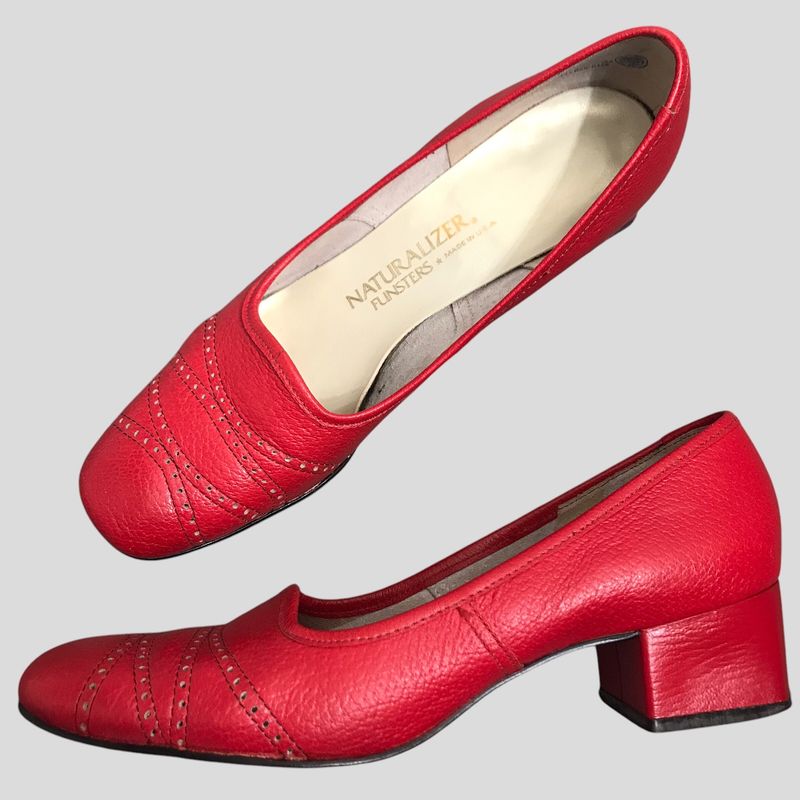
Slingbacks solved the eternal problem of transitioning from office to evening events without a shoe change. The defining feature – that adjustable strap that wrapped around the heel – provided security without the confinement of full pumps.
Women appreciated how the open heel offered ventilation during warmer months while maintaining professional appearance. The most popular versions featured pointed toes and slim heels around 2-3 inches high. Neutral colors dominated for office wear, while evening versions came in more adventurous shades and materials.
My mother-in-law still talks about her favorite navy pair that took her from secretarial desk to dinner dates without missing a beat. They represented the practical reality of women’s expanding social roles – needing footwear that could handle multiple contexts without compromising style or comfort. The adjustable strap also made them more forgiving for feet that swelled slightly during long workdays.
12. Spectator Shoes: Two-Tone Sophistication
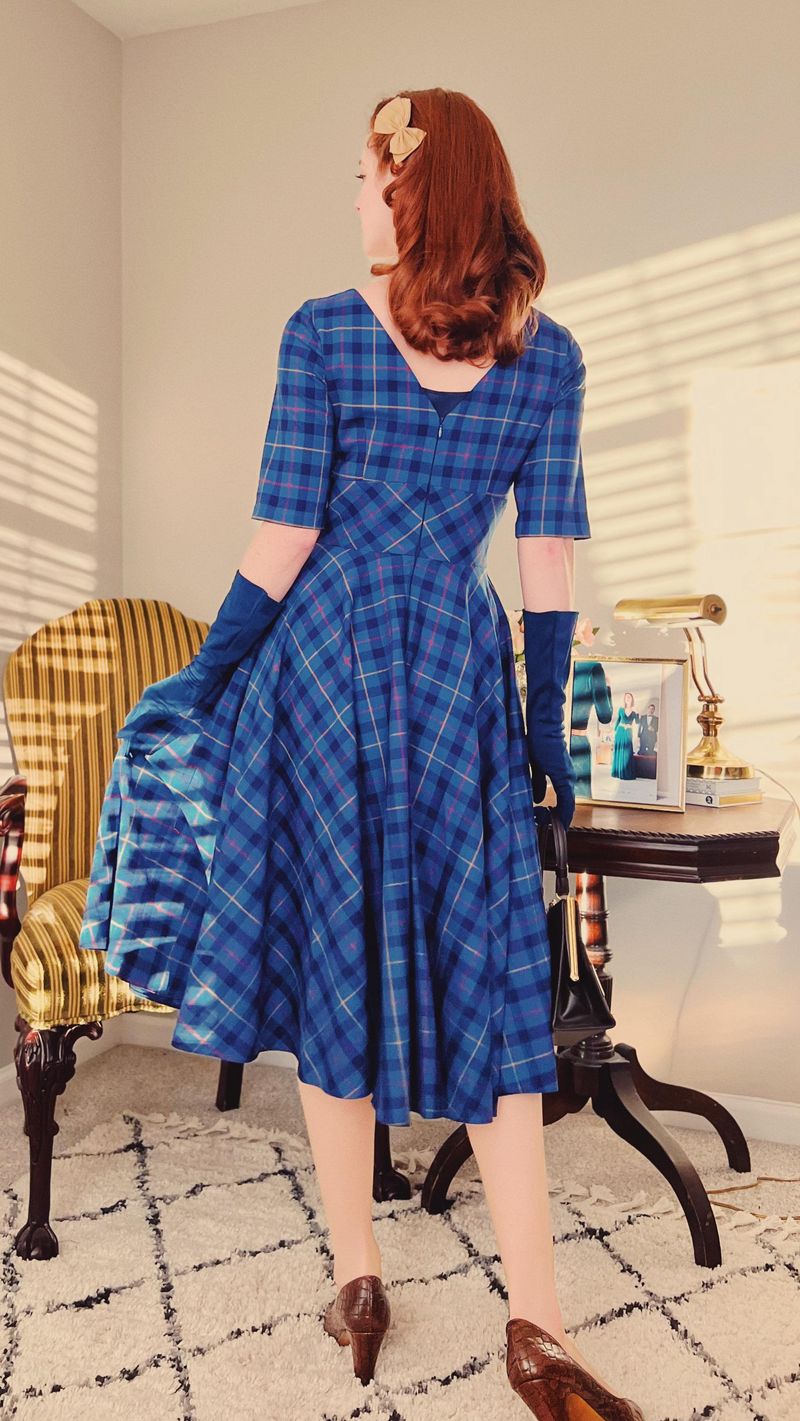
Spectator shoes brought sporty two-tone styling from the golf course to everyday fashion. Originally men’s footwear from the 1920s, these distinctive shoes featured contrasting colors – typically white with black, brown, or navy accents highlighting the toe cap, heel, and decorative perforations.
Women’s versions maintained the two-tone theme but adapted the silhouette to pumps, oxfords, and even sandals. The combination usually featured a lighter base with darker accents, creating a crisp, sporty appearance that paired beautifully with tailored suits and casual wear alike.
My grandfather and grandmother had matching pairs – his were traditional oxfords while hers were daintier pumps with the same color scheme. They’d wear them to Sunday drives and casual outings, looking coordinated without being too matchy-matchy. Spectators represented the era’s appreciation for sporty elegance and the growing influence of leisure activities on mainstream fashion.
13. Cork Platform Heels: Summer Height Machines
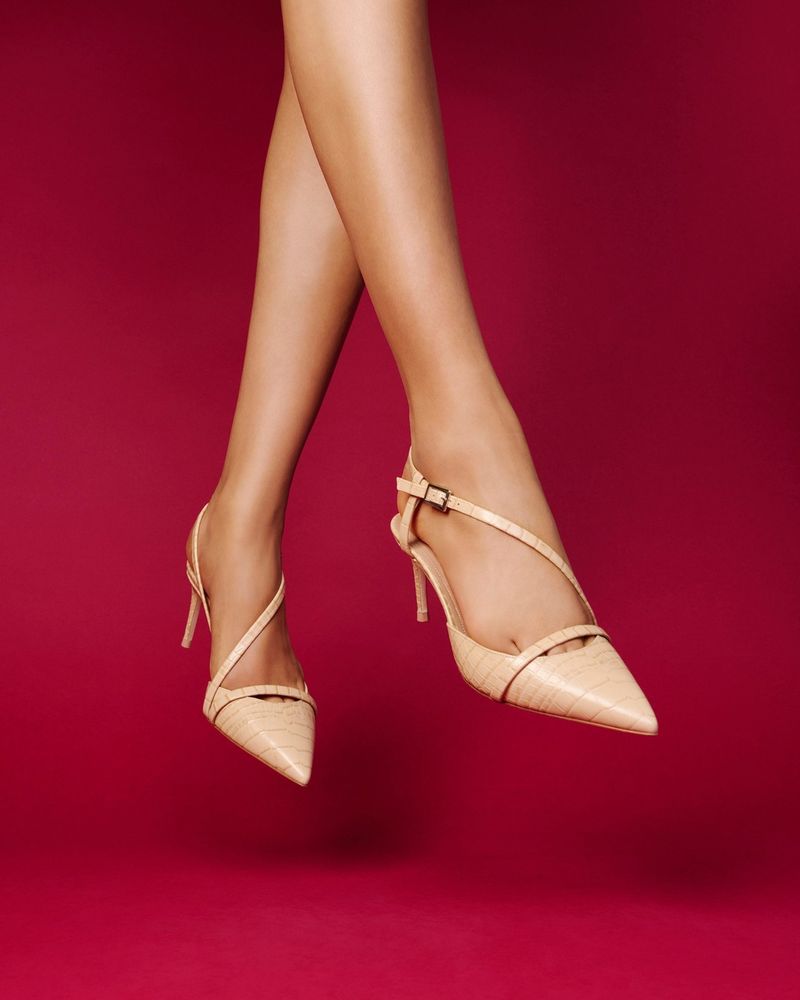
Cork platform heels brought dramatic height without sacrificing stability – perfect for outdoor summer events. Unlike today’s platforms that hide height under the toe box, ’50s versions proudly displayed their engineering with visible layers of cork forming both platform and heel.
These summery showstoppers typically featured fabric uppers in playful prints – everything from tropical patterns to polka dots. Ankle straps provided security, while the cork construction kept them surprisingly lightweight despite their substantial appearance. Colors tended toward bright and cheerful, reflecting the optimistic summer mood.
My aunt saved her honeymoon pair – red gingham with a 3-inch cork platform that she wore on the Atlantic City boardwalk. What made them special was their unapologetic embrace of artificial height at a time when most heels tried to appear daintier than they actually were. They represented summer’s permission to be more playful and less serious about fashion rules.
14. Low-Heel Oxfords: Collegiate Crossovers
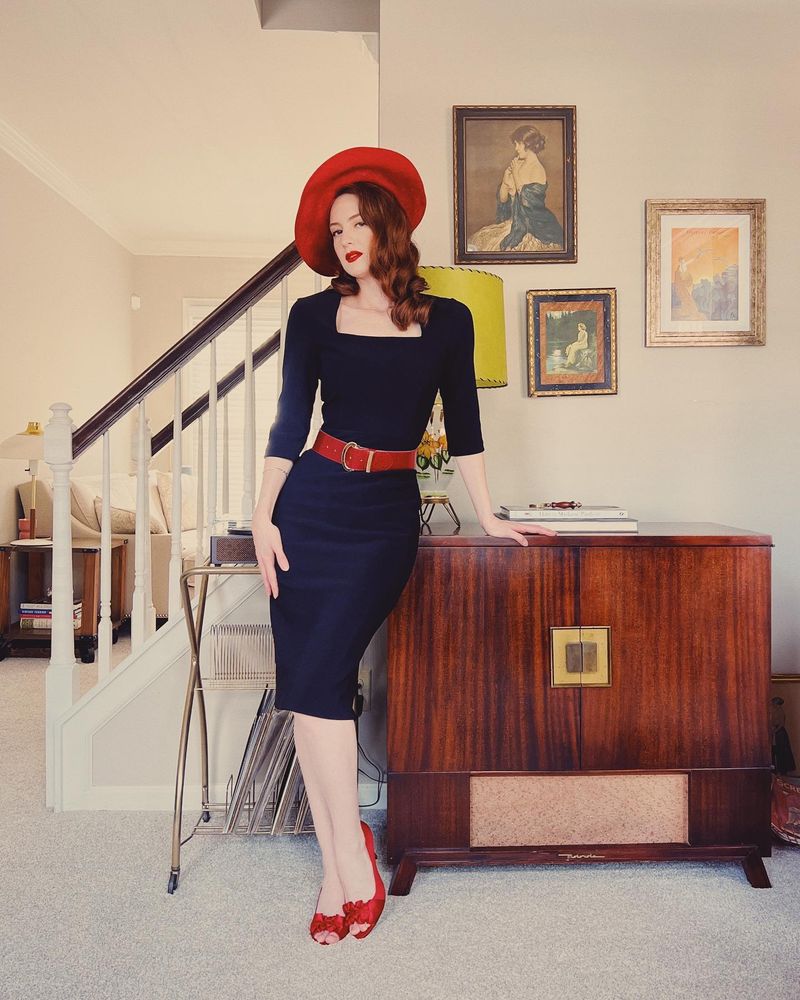
Low-heel oxfords bridged the gap between masculine practicality and feminine style for college girls and working women alike. Unlike their completely flat male counterparts, women’s versions featured a modest heel (usually under an inch) and slightly narrower silhouette while maintaining the distinctive closed lacing system.
These sturdy shoes came primarily in brown, black, and cordovan leather, often featuring decorative perforations or pinking along the seams. Campus coeds paired them with bobby socks and skirts, while office workers wore them with tailored suits for all-day comfort.
My college professor kept her graduation pair in her office – worn brown leather with tiny perforations forming patterns across the toe. She claimed they represented women’s determination to be taken seriously in academic settings. These shoes embodied the era’s tension between maintaining femininity while pushing into traditionally male spaces like higher education and professional workplaces.
15. Cap-Toe Pumps: Boardroom Classics
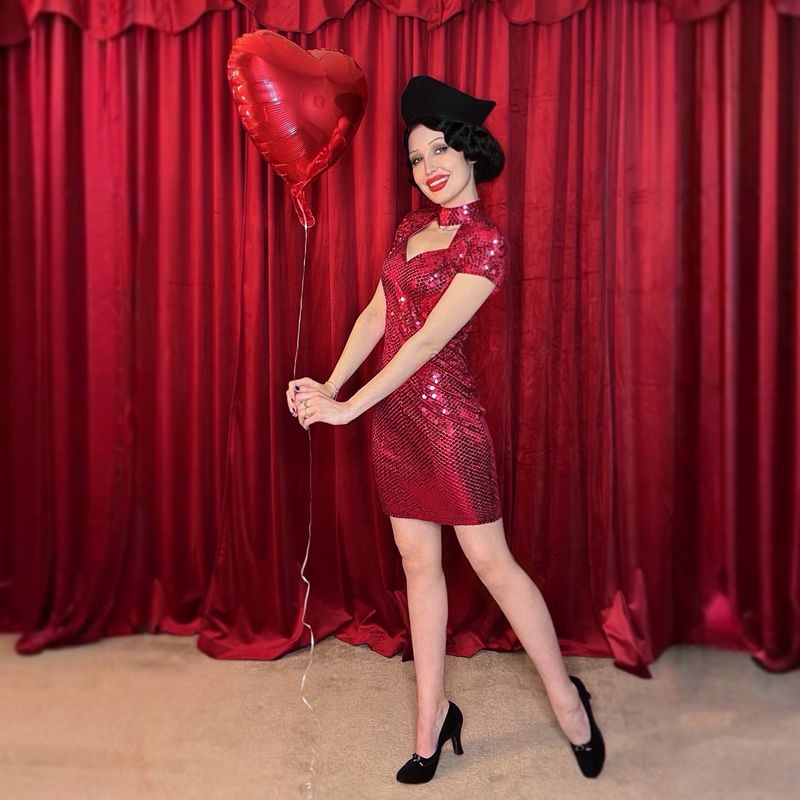
Cap-toe pumps offered subtle sophistication for professional women navigating male-dominated workplaces. The defining feature – that contrasting toe cap – provided visual interest without flashiness, perfect for environments where women needed to be noticed for their competence rather than their fashion choices.
Typically crafted from leather in neutral combinations (black with navy caps, tan with brown caps), these shoes featured moderate heels between 2-3 inches – high enough for formality but low enough for practical movement around offices. The toe cap itself was often a slightly different texture or finish rather than a boldly different color.
My grandmother wore them throughout her career as one of the first female bank managers in her city. She said they made her feel “properly dressed without drawing the wrong kind of attention.” They represented the careful balancing act professional women performed – maintaining femininity while fitting into serious business environments.
16. Bow-Front Heels: Sweet Sophistication
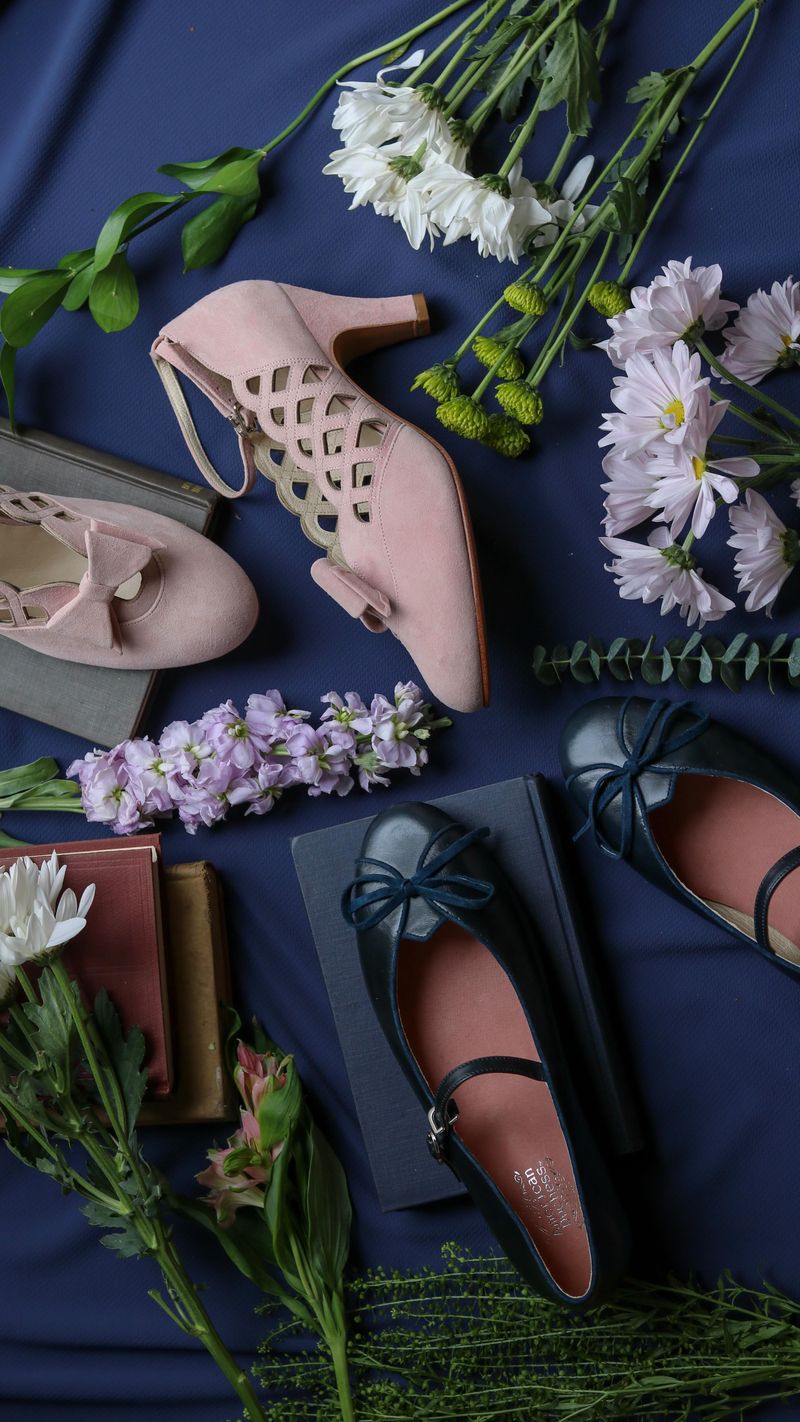
Bow-front heels added a touch of girlish charm to grown-up footwear with their distinctive decorative bows perched atop the vamp. Unlike today’s sometimes oversized versions, ’50s bows maintained elegant proportions – noticeable but never overwhelming the shoe’s silhouette.
These feminine pumps typically featured moderate heels around 2-3 inches and came in a rainbow of colors beyond basic black. Patent leather versions shone at special occasions, while suede and matte leather styles worked for everyday elegance. The bow itself often matched the shoe material exactly or provided subtle contrast.
My mother wore ivory ones at her courthouse wedding – simple pumps transformed into something special with that perfectly proportioned bow. What made them quintessentially ’50s was how they embodied the era’s love affair with feminine details that didn’t sacrifice adult sophistication. They represented womanhood that embraced rather than rejected traditionally feminine embellishments.
17. Lace-Up Boots: Practical Pioneers
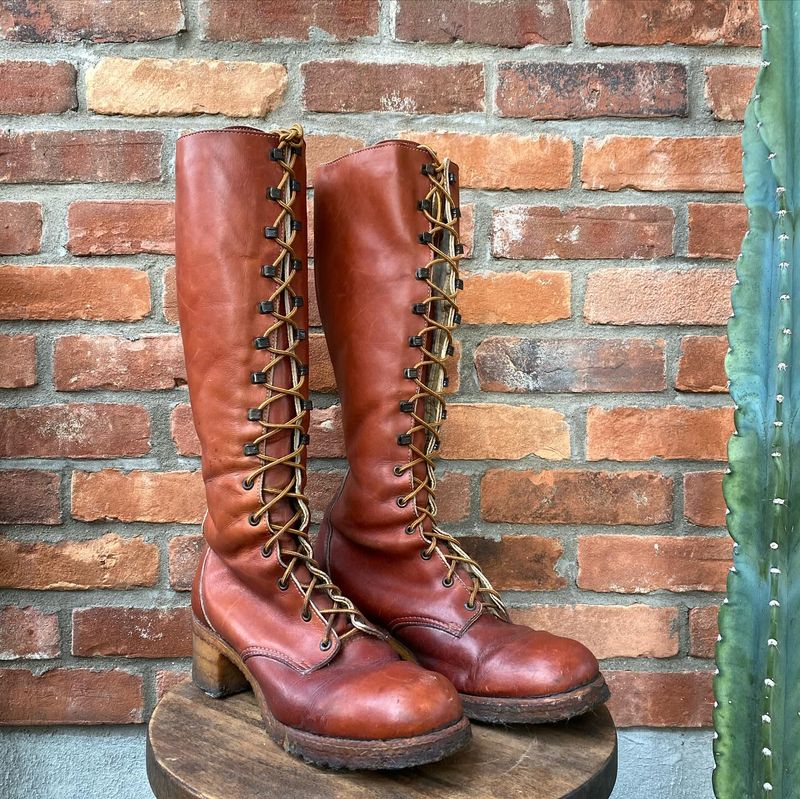
Lace-up boots served as winter workhorses for women battling snow and rain before weather-specific footwear became commonplace. Standing apart from dressier styles, these ankle-height boots featured practical lacing systems, low stacked heels, and durable leather construction designed to withstand harsh elements.
Colors stayed firmly practical – black, brown, and occasionally deep burgundy – with little ornamentation beyond functional stitching. Some versions featured subtle fur or fleece lining peeking out at the top edge for additional warmth. The silhouette remained surprisingly feminine despite their utilitarian purpose, with narrower proportions than men’s work boots.
My grandmother kept hers by the back door for decades – scuffed brown leather witnesses to countless grocery trips through Minnesota winters. What made them remarkable was their acknowledgment that women needed practical footwear for everyday life beyond fashion considerations. They represented the reality of women’s lives beyond the glamorous images in magazines.
